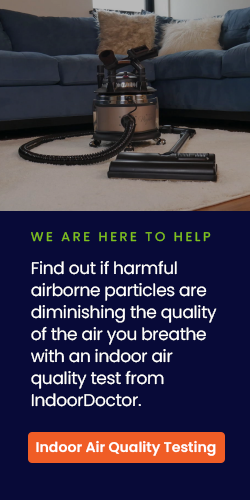A new analysis of prior research found that household dust contains many chemicals that are emitted by everyday products creating toxic dust such as flame retardant clothing and vinyl flooring, according to the report published in Environmental Science & Technology.
The levels of some of the chemicals are higher than what the Environmental Protection Agency screens for at toxic waste sites.
The chemicals found at the highest levels were phthalates. These are chemicals added to plastics to help make them soft. They are in vinyl flooring and blinds. Many of them are established endocrine disruptors, which means that they can interfere with our hormones.
Some of the chemicals were extremely common. There were three flame retardant chemicals detected in over 90 percent of the samples.
Experts disagreed about the level of danger in the dust.
While the findings are worrisome, it’s not clear yet how alarmed people should be.
There is accumulating evidence that exposure to these agents might lead to disease that we are seeing in modern cities, such as obesity, asthma and autism. All of those have had a pretty sharp rise over the past 30 years. The question is how strongly are these compounds linked to disease.
Many chemicals that are in consumer products end up in the dust, as is shown in the study. We are in contact with the dust all the time.
Children and infants who crawl and play on dusty floors — and often put their hands in their mouths — are most at risk for exposure to the chemicals or toxic dust, experts said.
Researchers studied 26 articles from peer-reviewed journals, as well as an unpublished data set, that analyzed sample of dust vacuumed up from people’s homes. They combined the data in what is known as a meta-analysis. The team of scientists included the Natural Resource Defense Council, advocacy group the Silent Spring Institute, the Howard T.H. Chan School of Public Health and the University of California, San Francisco.
They found:
- 10 potentially hazardous chemicals were in dust samples from 90 percent of homes. This included a flame retardant that has been linked with cancer, called TDCIPP.
- Phthalates were found in the highest concentrations in the dust samples.
- Phenols, which are chemicals used in cleaning products and other household items, were the second highest concentrations.
- Highly fluorinated chemicals such as PFOA and PFOS, which are found in cell phones, pizza boxesand many non-stick, waterproof and stain-resistant products. These chemicals have been linked to a variety of health problems, including those affecting the immune, digestive, developmental and endocrine systems.
Until there is more research, if families want to limit exposure to the chemicals, they can cut back on the amount of plastic in their homes.
Other suggestions from the researchers:
- Frequent hand washing has been associated with lower flame retardant exposures even in children.
- Dust with a damp cloth and use a wet mop.
- Use a vacuum with a HEPA filter.
Read More:
About The HEPA Vacuum and Why It Matters click here
About The Benefits Of Bagged Vacuum Cleaners For Allergy Sufferers click here






